Now, Let's Talk 🌱 Spring Planting!
And do our bit to reverse the butterfly collapse, while there's still time.
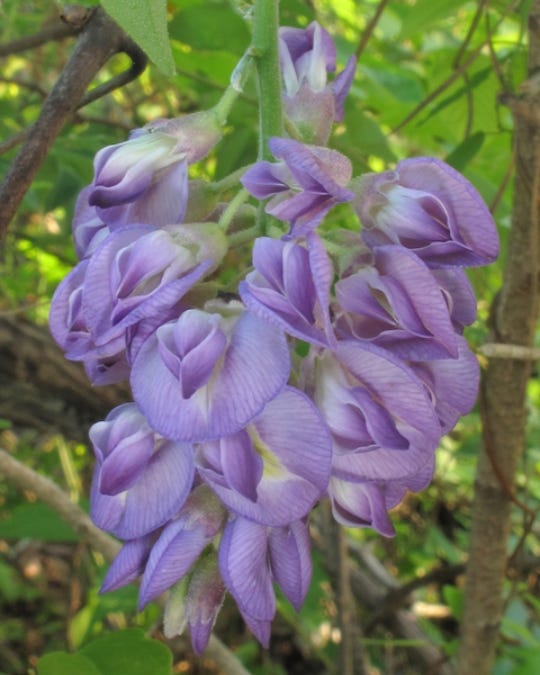
Few Plants, Big Impact is the theme for my Rhode Island garden this spring and summer.
Over the past three growing seasons since we bought our current house, I’ve planted dozens of shrubs and trees, dozens of gallon-sized perennials, thousands of plugs, and pounds of seed — all native, of course. And I’ve spent quite a bit in the process. Now, I want to patiently watch how these plants grow in. But I’m too eager to sit back and do nothing. Hence, Few Plants, Big Impact. (Husband Pete says, “I will believe it when I see it.”)
Naming my spring planting theme gives my yard a clear, exciting direction. Sharing it with you will, I hope, keep me focused, inspired, and committed. I’m enjoying naming themes so much that I’ve named the individual projects that make up my Few Plants, Big Impact theme:
Vertical Drama (tall, vine-covered trellises between windows on both my house and shed)
Formal Notes (box-like spheres of inkberry holly in pairs of planters to contrast with the wild plantings around them)
Legacy Lilies (encircling my shady sunset seating area with wood lilies (Lilium philadelphicum) to honor Pete’s family name, Lily)
So, what’s your planting theme?
— Heather
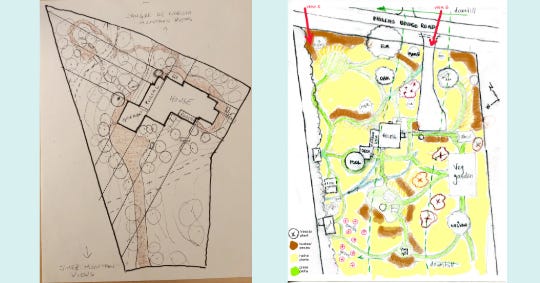
Upcoming live programs (for paying subscribers)
Zoe and I are repeating our workshop this Saturday, March 29, 9 to 10:30 a.m. EDT for those who couldn’t make the evening midweek sessions: Design Your Yard: Quick & Easy Layouts (create a plan for your yard in a fast-paced, interactive 90 minutes; learn more).
This was so much fun, truly, thank you so much! — Jess
Thank you! So fun! — Megan
Plus, we are hosting a new workshop, Yardenalities: Design Shortcut for a Backyard Makeover (identify your style and learn how to apply it on the ground) on Saturday, April 5, at 9 to 10:30 a.m. EDT and Tuesday, April 8, at 5:30 to 7 p.m. EDT.
If you’re already a paying subscriber, scroll down to the bottom of this email for the free Zoom registration links.
If you’re a free subscriber, upgrade to paid and you’ll receive the registration links in your confirmation email.
Dear Heather: My yard is currently neglected and FULL of invasive species. I'm overwhelmed, have no experience with plants other than herbs/food gardening, and need a boost to help me get this done this year. — SK, Florida
Game On! is your theme and prolific plants are your friend. As Humane Gardener Nancy Lawson recently wrote,
Rambunctious native spreaders are the real workhorses of any nascent wildlife garden, preventing encroachment of nonnative species that compromise habitat. Their density enhances important visual and olfactory signals to birds, bees, and other animals who forage more efficiently among massed plantings. — The American Gardener
Best practice for invasive removal — somewhat counterintuitively — is to first eliminate them from relatively pristine areas, then work toward the areas with the most invasives. The key is to immediately replace any invasives with native plants that thrive in similar conditions to outcompete them. For example, Lawson recommends replacing garlic mustard with golden ragwort, English ivy with Virginia creeper, stiltgrass with river oats, and mugwort with mountain mint. See my previous article on battling invasives, with Florida-specific recommendations. In the meantime, mow/prune/string cut invasives to keep them from going to seed.
Dear Heather: Any quick tips for those of us who erroneously started with Step 4 (buying and arranging perennials) and now realize we need to go back to Step 1 (overall layout)? — Liz, New York
Try working successful plantings into your overall plan as an “existing feature.” After you play with alternative arrangements of paths and destinations, you may decide they have to go — and that’s OK. You can transplant them to where they’ll work best in the long run. Zoe and I are both pretty ruthless about moving plants (shrubs, as well as perennials) and most survive.
Remember, your goal is to create a place where humans — you, your family, your friends — thrive alongside wildlife. You’re creating an entire ecosystem, which means abandoning the traditional horticultural ideal of preserving each plant (or leaf) to the peril of the insects — and humans — that depend on them. Possible theme: Big Picture.
Dear Heather: I feel like I’m struggling to let go of mown lawn because of ticks with free-roaming animals/kids. Is the answer just to keep everyone out of the wild areas and leave that for wildlife? — Kiah, New York
That’s right. Forget your mental image of kids running slo-mo through fields of wildflowers. Adults and children alike generally prefer to strolling mown paths to wading through three-foot tall plants. Pets are more likely to wander, but they can take anti-tick medication. Zoe has had great success eliminating ticks from her lawn with a no-tick border of native mints (e.g., monardas, mountainmints), plus several other strategies outlined in How to Protect Yourself from Lyme Disease if You Love Wildlife. Possible theme: Mad for Mints.
10 Weekends to Wild Challenge #3: Name your theme
What can you reasonably accomplish this growing season, given your budget and time constraints? Now, sum that up in a few words. Then share your theme name in Substack chat, with an inspiration image if you have one. Putting your vision out there makes it real and invites encouragement, ideas, and camaraderie from fellow native plant lovers. (Apologies to those who had difficulty posting last week; I have changed the settings to allow anyone to start a chat.)
Why, How, Wow!
Why? Butterfly calamity; pesticide villainy
The mainstream press reported the harrowing findings of a butterfly study published this month in Science: The total number of butterflies in the contiguous United States declined 22 percent between 2000 and 2020; one third of butterfly species declined significantly while only 3 percent — nine species — gained.
Butterflies are vanishing from the face of the earth. — Nick Haddad, co-author, quoted in The Washington Post
Even the cabbage white, originally from Europe and so commonly found munching on vegetables as a caterpillar that it’s considered an invasive pest, dropped by half.
That shocked me. If even the cabbage white is declining, then, oh my God. — Nick Haddad in The New York Times
The butterfly study authors point to other studies suggesting insecticides are the main culprit, especially neonicotinoids. And several recent studies demonstrate the ubiquity of pesticides and their harmfulness to all life on earth.
In this study, we collected 227 milkweed (Asclepias spp.) leaf samples from 19 sites representing different land use types across the Central Valley of California. We also sampled plants purchased from two stores that sell plants to home gardeners. We found 64 pesticides (25 insecticides, 27 fungicides, and 11 herbicides, as well as 1 adjuvant) out of a possible 262 in our screen. Pesticides were detected in every sample, even at sites with little or no pesticide use based on information from landowners. — Frontiers in Ecology and Evolution
A global meta analysis published last month in the prestigious journal Nature Communications found pervasive negative impacts of pesticides:
The scientists analyzed over 1,700 existing lab and field studies of the impacts of 471 different pesticide types — either insecticides, fungicides or herbicides — in agricultural, commercial or domestic use. Wide-ranging negative effects were seen for over 800 species found on land and in water, including impacts on how fast they grow, their reproductive success, and even behavior such as their ability to catch prey, find plants to forage upon, move, or attract mates. Pesticides can also affect organisms' metabolism and damage cells. — Phys.org
A study of pediatric cancer in Nebraska confirmed humans are among the species harmed by pesticides, especially herbicides.
We observed positive associations between agrichemical mixtures and overall cancer, brain and CNS cancers, and leukemia among children
About a 10% increase in pesticide mixtures was associated with a 23%–36% increase in these cancer rates
Among the pesticides considered in the mixture, herbicides contributed the most toward these joint associations — GeoHealth
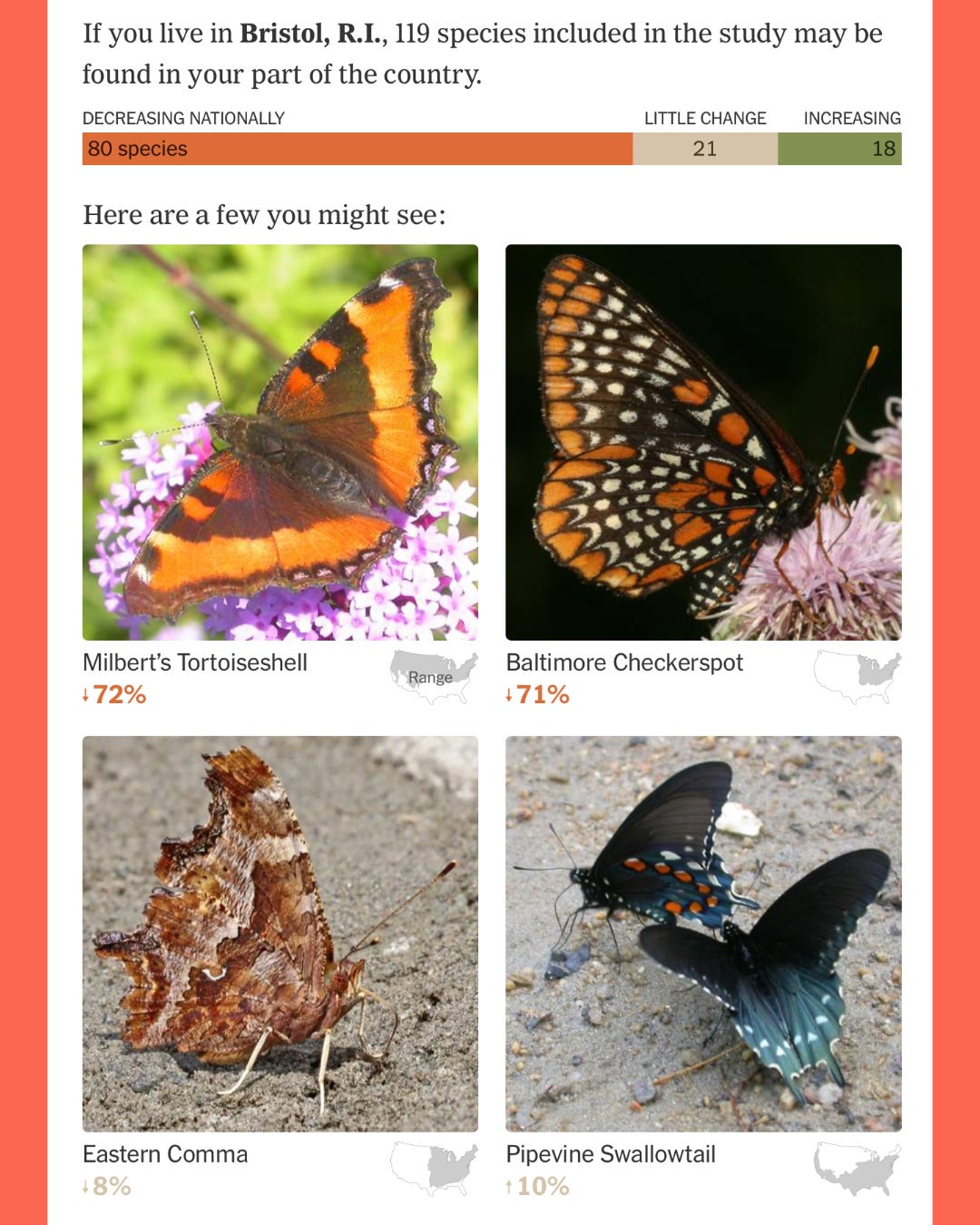
How: Keep on planting on
The butterfly study authors pointed to a bright spot: Gulf fritillary butterflies have increased their range, apparently because individuals have planted its host, passionvine. That’s why we’re here folks. All of us working in parallel in our little plots can indeed make a difference. And that gives me great comfort at a time when so much else feels out of control.
So, let’s keep on planting on! For those new to landscaping for biodiversity, here are theme ideas to get you started:
Fast & Cheap (see The Fast, Cheap Way to a Nice Enough Native Plant Landscape)
Dipping My Toe (see How to Enliven Your Entrance with a Vibrant Palette of 9 Native Plants)
Butterfly Banquet (see 10 Butterflies to Host and The Best Monarch Garden Design Isn’t What You Think)
Shady Oasis (see Vibrant Native Plants for Shade)
Privacy Please (see Fun Playing with Privacy Hedge Options)
You may also find inspiration among these 10 really easy ways to start using native plants in your yard.
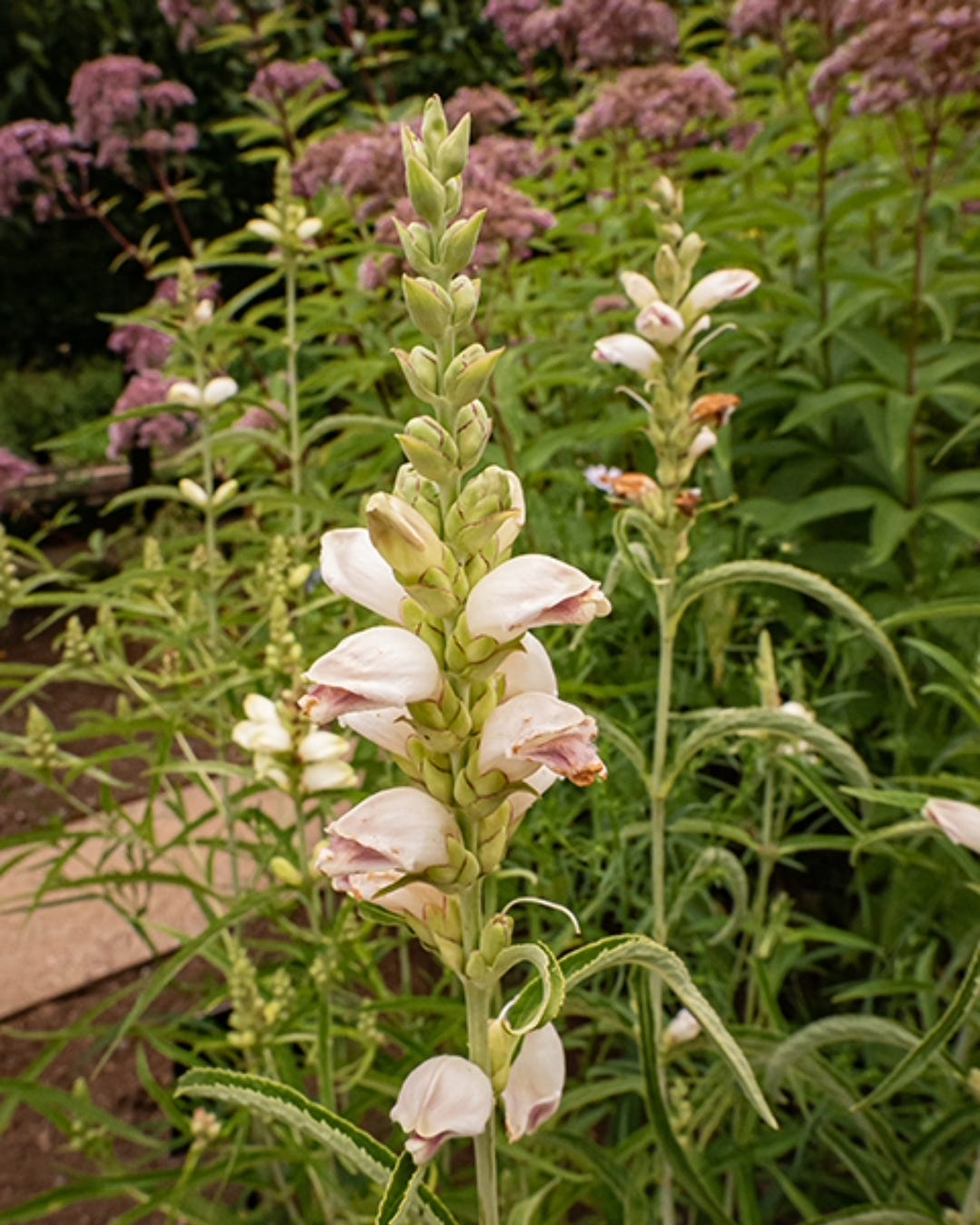
Wow! MORE gorgeous native gardens
Unlike you, cherished reader, most other people take action to protect the environment because they see others doing so, not because they research compels them. That means the effort and funds you invest in transforming your yard has a multiplier effect, influencing everyone who admires it, as well as the butterflies and other wildlife that benefit directly. And that’s why I’m encouraged by an uptick in articles and events about native landscapes. For example, two-thirds of the 300 Garden Conservancy Open Days 2025 are “maintained with all living creatures in mind” — and I highly recommend you visit one this summer.
In addition, Architectural Digest’s current issue includes two well-designed yards with lush plantings and intentional use of turf for paths and destinations. I particularly like the landscape designed by Marisa Kula Mercer around the home she shares with husband James Mercer of The Shins in Portland, Oregon. Mercer studied at Great Dixter and her home landscape exemplifies our English-inspired Blooming Romantic Yardenality. But her plant palette is mostly North American and, according to AD, “spotted joe-pye weed and Culver’s root are exultant on the grounds.”
Register for upcoming online workshops ➡️
Design Your Yard: Quick and Easy Layouts.
By the end of this hands-on workshop, you’ll walk away with a custom layout for your yard — including paths, seating areas, and zones for planting — so you can confidently bring your vision to life. This is the last time we will offer this workshop this season:
Yardenalities: Design Shortcut for a Backyard Makeover.
We’ll explore the key elements of different garden styles, help you discover your own Yardenality, and show you how to apply it in practice. We are offering this workshop twice:
Spots are limited to keep the workshop interactive. Register to secure your place today.




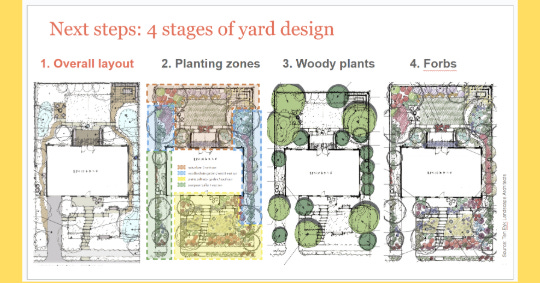

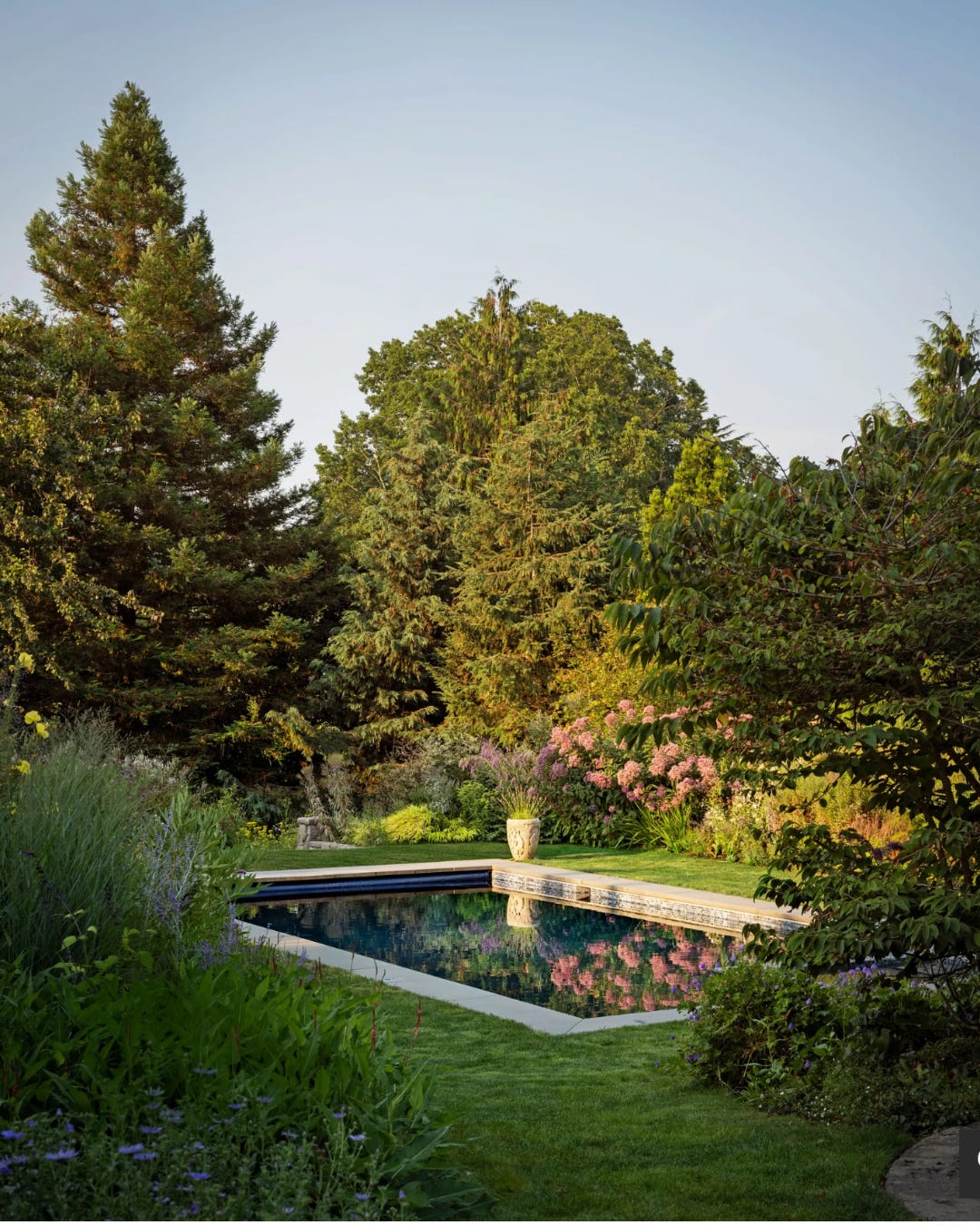
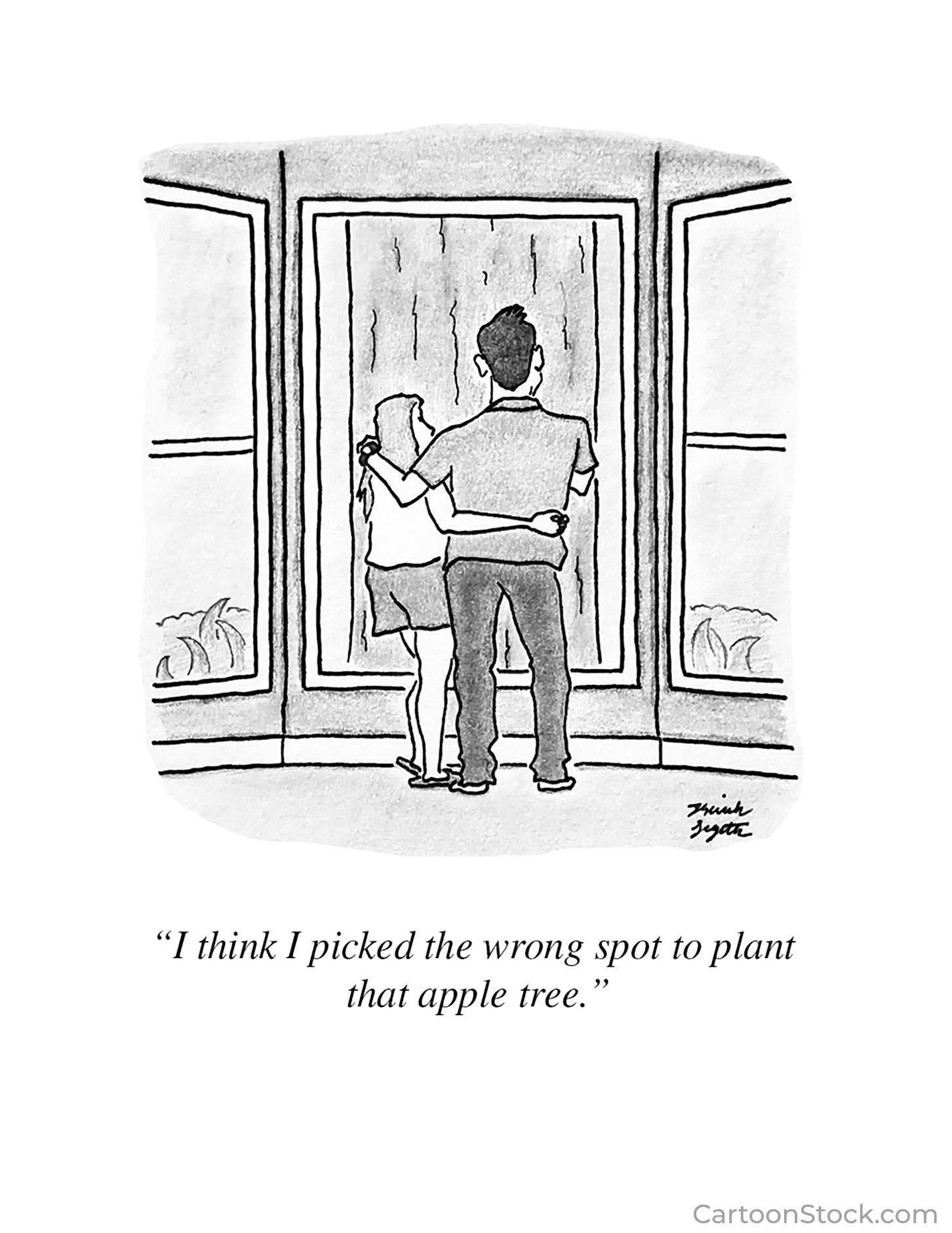
Thank you for raising the issue of butterfly decline - it's so important for all gardeners to help through their choice of pollinator plants. I was surprised to read that even the cabbage white was declining - I always considered it to be resilient but clearly even our most adaptable of species can't cope with heavy pesticide use and other threats. Many of the garden plants, especially bulbs, in sale in the UK come laden with residues of fungicides and pesticides so gardeners have to be so careful with their choices.
Oh, also, I planted an American wisteria at my old house and it was so great. Definitely need to find a spot for one here… I’ve only been here 11 years, so…